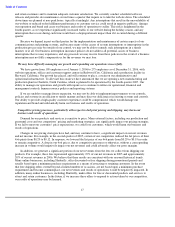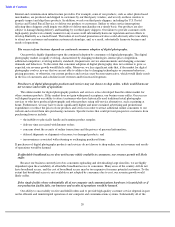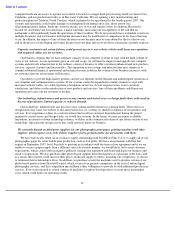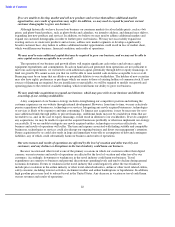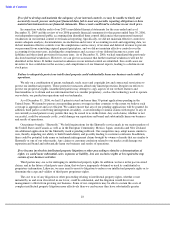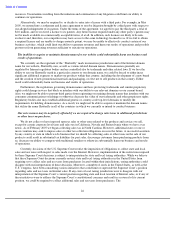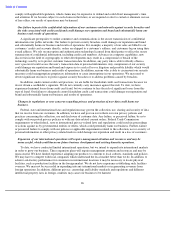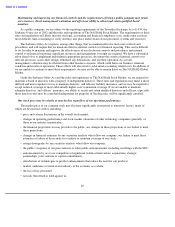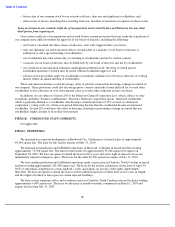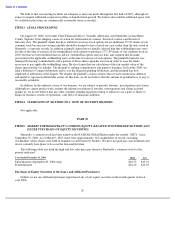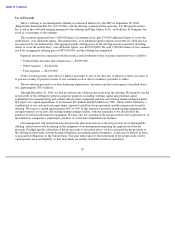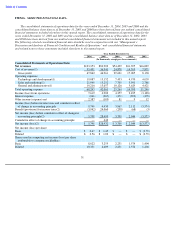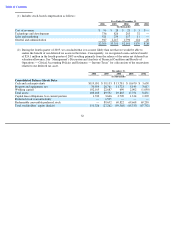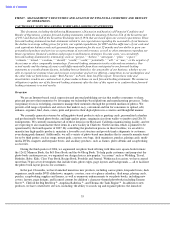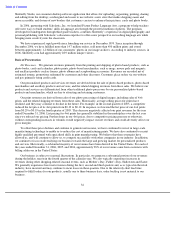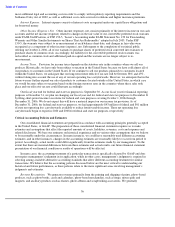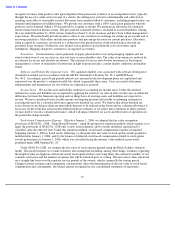Shutterfly 2007 Annual Report Download - page 32
Download and view the complete annual report
Please find page 32 of the 2007 Shutterfly annual report below. You can navigate through the pages in the report by either clicking on the pages listed below, or by using the keyword search tool below to find specific information within the annual report.
Table of Contents
Maintaining and improving our financial controls and the requirements of being a public company may strain
our resources, divert management’s attention and affect our ability to attract and retain qualified board
members.
As a public company, we are subject to the reporting requirements of the Securities Exchange Act of 1934, the
Sarbanes-
Oxley Act of 2002 and the rules and regulations of The NASDAQ Stock Market. The requirements of these
rules and regulations will likely increase our legal, accounting and financial compliance costs, make some activities
more difficult, time-consuming or costly and may also place undue strain on our personnel, systems and resources.
The Sarbanes-Oxley Act requires, among other things, that we maintain effective disclosure controls and
procedures, and will require that we maintain effective internal control over financial reporting. This can be difficult
to do. In order to maintain and improve the effectiveness of our disclosure controls and procedures and internal
control over financial reporting, significant resources and management oversight are required. We have a substantial
effort ahead of us to implement and maintain appropriate processes, document the system of internal control over
relevant processes, assess their design, remediate any deficiencies, and test their operation. As a result,
management’s attention may be diverted from other business concerns, which could harm our business, financial
condition and results of operations. These efforts will also involve substantial accounting related costs. In addition, if
we are unable to continue to meet these requirements, we may not be able to remain listed on The NASDAQ Global
Market.
Under the Sarbanes-Oxley Act and the rules and regulations of The NASDAQ Stock Market, we are required to
maintain a board of directors with a majority of independent directors. These rules and regulations may make it more
difficult and more expensive for us to maintain directors’ and officers’ liability insurance, and we may be required to
accept reduced coverage or incur substantially higher costs to maintain coverage. If we are unable to maintain
adequate directors’ and officers’ insurance, our ability to recruit and retain qualified directors and officers, especially
those directors who may be considered independent for purposes of Nasdaq rules, will be significantly curtailed.
Our stock price may be volatile or may decline regardless of our operating performance.
The market price of our common stock may fluctuate significantly in response to numerous factors, many of
which are beyond our control, including:
27
•
price and volume fluctuations in the overall stock market;
• changes in operating performance and stock market valuations of other technology companies generally, or
those in our industry in particular;
• the financial projections we may provide to the public, any changes in these projections or our failure to meet
these projections;
• changes in financial estimates by any securities analysts who follow our company, our failure to meet these
estimates or failure of those analysts to initiate or maintain coverage of our stock;
•
ratings downgrades by any securities analysts who follow our company;
•
the public
’
s response to our press releases or other public announcements, including our filings with the SEC;
• announcements by us or our competitors of significant technical innovations, acquisitions, strategic
partnerships, joint ventures or capital commitments;
•
introduction of technologies or product enhancements that reduce the need for our products;
•
market conditions or trends in our industry or the economy as a whole;
•
the loss of key personnel;
•
lawsuits threatened or filed against us;


